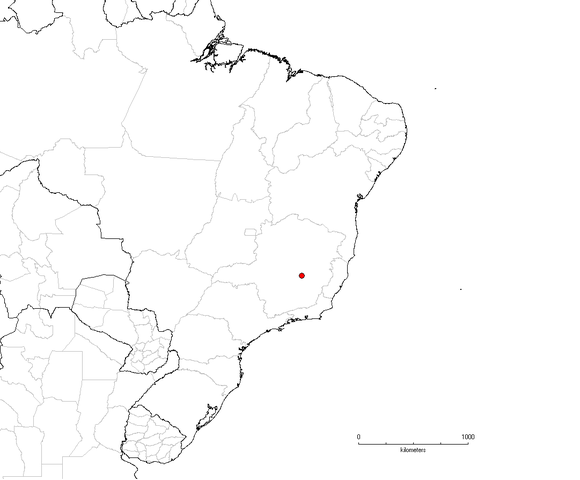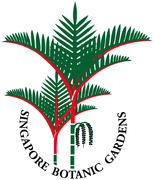Nomenclature
Accepted name/Authority/Place of publication:
Merremia calycina (Meisn. in Martius) Hallier f., Bot. Jahrb. Syst. 16: 552. 1893.
Synonyms:
Ipomoea calycina Meisn. in Martius, Fl. Bras. 7: 260. 1869. TYPE. Brazil. Minas.Gerais: Warming 1767 (isotypes C(×4), NY).
Merremia heringeri K. Afzelius, Svensk. Bot. Tidskr. 60(4): 487. 1966. TYPE. Brazil. Minas Gerais: Heringer 5166 (holotype S?).
Description
Habit:
Vines; stems herbaceous, twining, longitudinally striate to smooth, to 2 mm in diameter, entirely pubescent with velvety, reddish, appressed, simple indumentum.
Leaves:
Leaves with petioles. 12-18 mm in length, slender, sulcate, the blades entire, broadly lanceolate-ovate, basally truncate, the margins entire to slightly undulate, apically acute to attenuate, mucronate, the secondary veins impressed above and prominent below, softly pubescent on both surfaces, reddish-brown above and silvery below, the surface covered by minute conical projections and the trichomes projecting from the tops of these and between them, blade 55-77 mm long, 20-40 mm wide.
Inflorescences:
Inflorescences either an axillary cyme or reduced to solitary flowers, the peduncles slender, smooth, pubescent, equal to or exceeding the petioles, 10-50 mm long, the bracts 2, elliptic-ovate, basally truncate, margins entire, apically acuminate, caducous, 10-11 mm long, 3-4 mm wide, softly pubescent on both surfaces, the bracteoles 2 per flower or per bud in a several flowered inflorescence, lanceolate-elliptic, basally truncate, apically attenuate, pubescent on backs only, 10-15 mm long, 2-5 mm wide, the pedicels slender, angulate, enlarged distally, densely pubescent, 6-13 mm long.
Flowers:
Sepals equal, lanceolate, basally acute to truncate, apically attenuate, densely reddish-gold pubescent on the outer surface and glabrous on the inner, much enlarging and persisting in fruit, 13-20 mm long, 3-8 mm wide; corollas funnelform, white, with distinct bands of pubescence on the interplicae, margins of corolla toothed, each tooth with a terminal tuft of reddish pubescence, 35-40 mm long, 20-25 mm wide; stamens unequal, included within the corolla, the filaments adnate basally, filiform above, basally pubescent, becoming glabrescent distally, 10-14 mm long, the anthers longitudinally dehiscent, with the tips recurved at maturity, white, 2-3 mm long, the pollen smooth, oblate spheroidal, 9(-10) colpate; ovary subglobose, pubescent, less than 2 mm in diameter, the style simple, filiform, 14-15 mm long, the stigma biglobose.
Pollen:
Pollen smooth, oblate spheroidal, 9(-10) colpate
Fruits:
Fruits papery capsules, surrounded by the much enlarged, accrescent calyx, the sepals becoming glabrate on the outer surface and glabrous within, 25-30 mm long, 9-12 mm wide, the capsule glabrous, subglobose, 4-lobed, valvate, 12-15 mm in diameter
Seeds:
Seeds 4, grayish tan, short puberulent, becoming glabrate, subglobose, with a distinct hilum, faintly keeled, 4-5 mm long.
References:
Austin, D. F. & G. W. Staples. Convolvulaceae in Flora Neotropica [unpublished data].
Biogeography, Ecology and Natural History
Distribution Map:

Distribution:
Brazil; apparently endemic to the planalto.
References:
Austin, D. F. & G. W. Staples. Convolvulaceae in Flora Neotropica [unpublished data].
Authorship for webpage
Editor:
George Staples, Esmond Er
Contributors:

Classification:

Add new comment